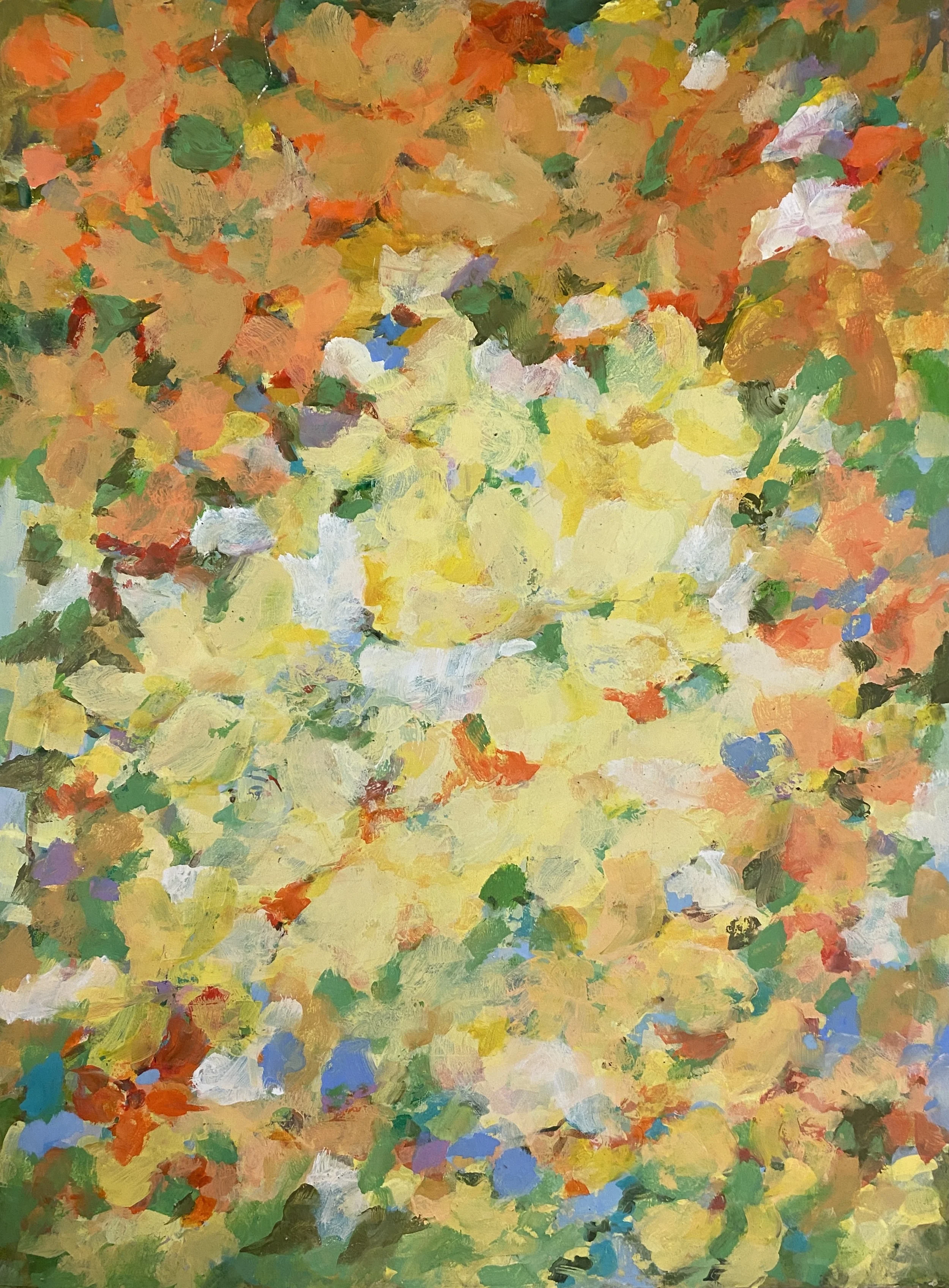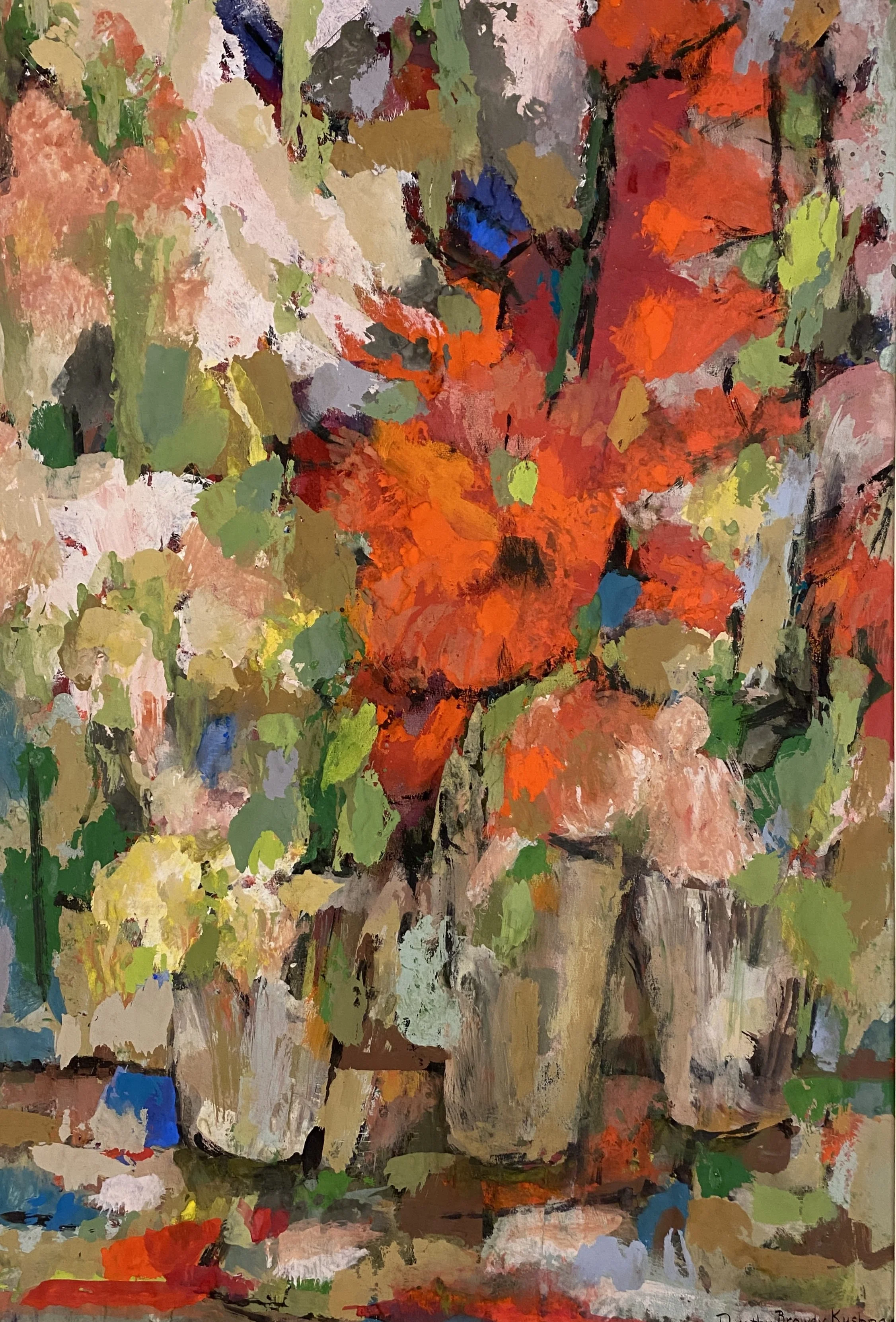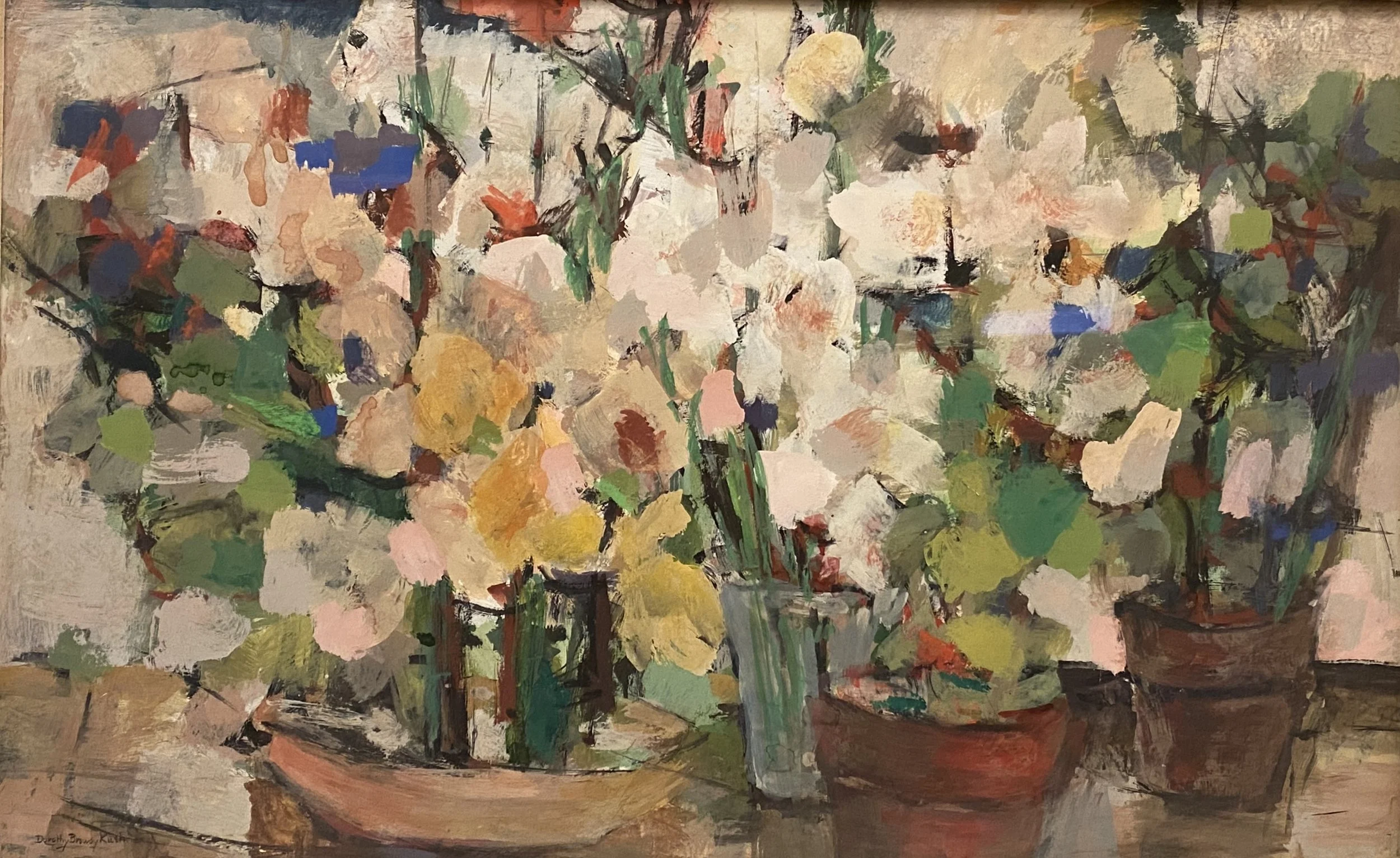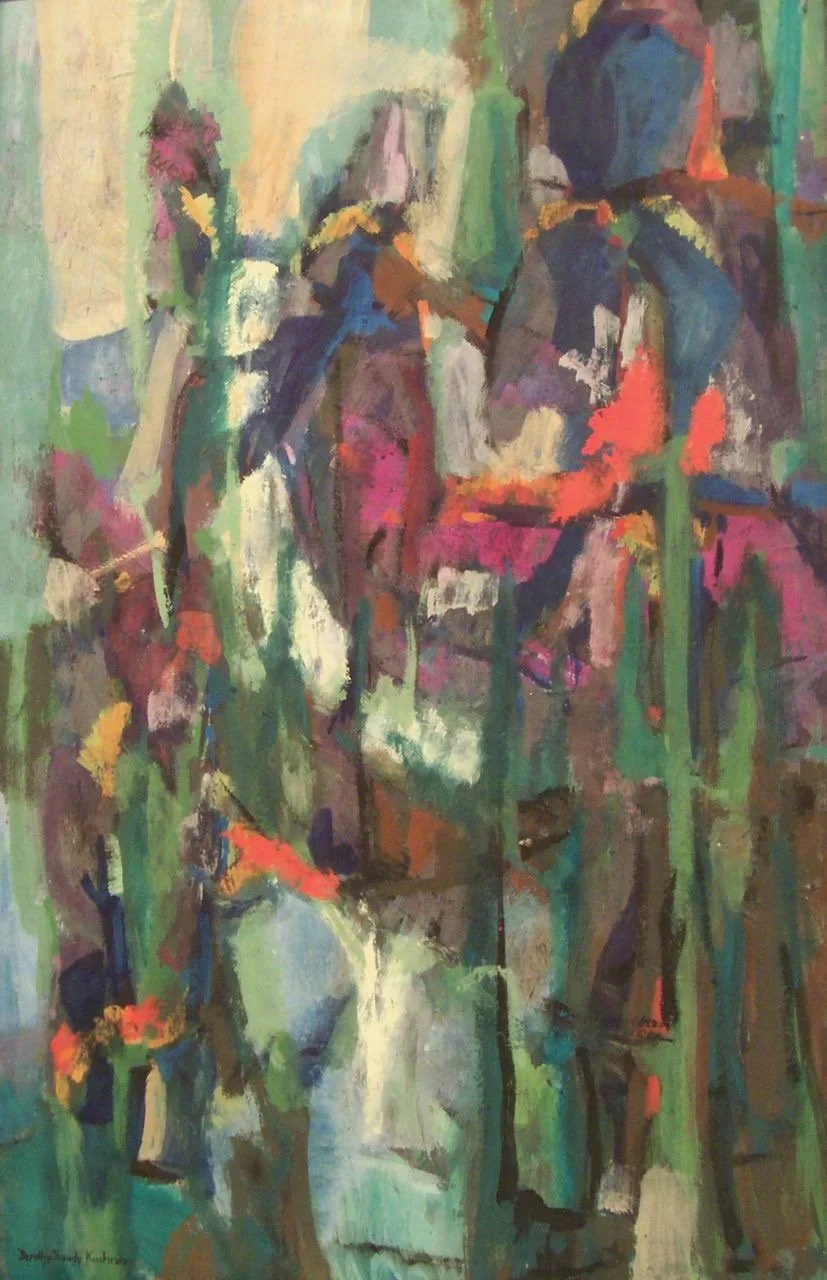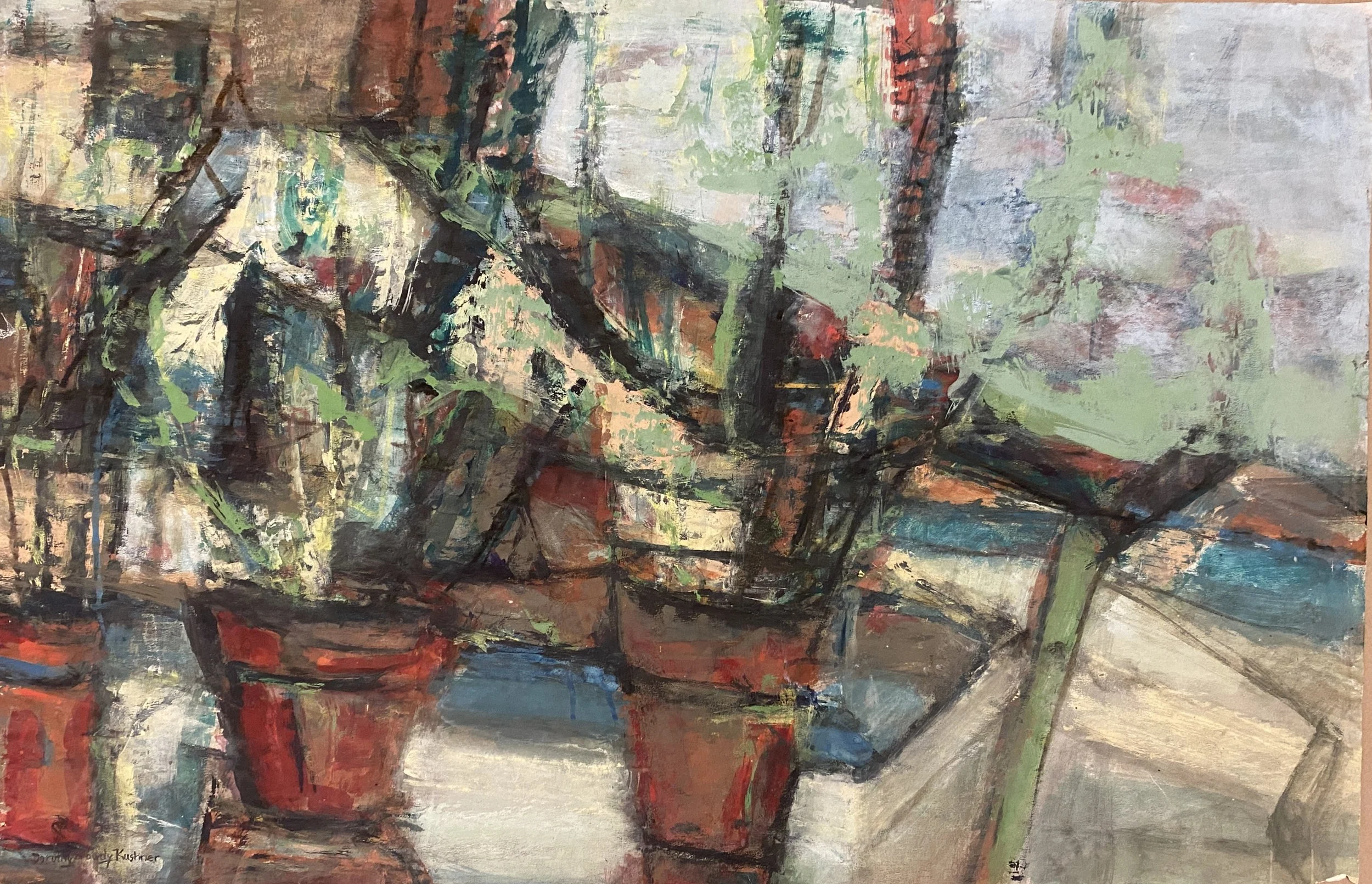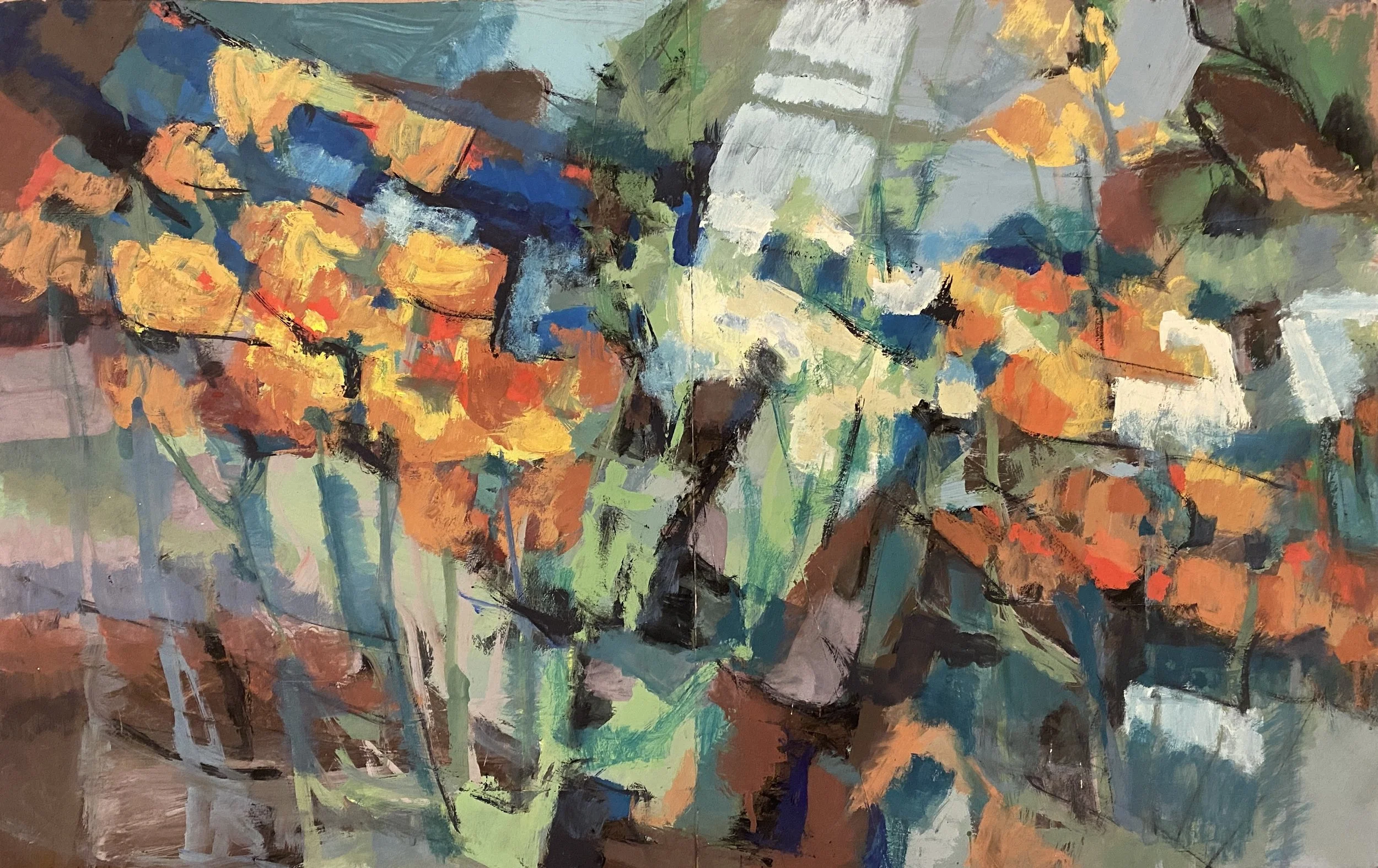
Fields of Flowers
Kushner painted flowers for more years than any other subject, from the mid-1950s through the early 1980s. Over that time her media, palette, and compositional choices evolved with her changing influences and interests. To show those changes the paintings here are arranged in chronological order from most to least recent.
In 1963 Dorothy viewed the floral watercolors of Emil Nolde at the Pasadena Museum of Art. His vibrant flowers were positioned close to the picture plane. Around that date her floral representation lost its cubistic stylization and subdued tones in favor of organic shapes and saturated colors. Sometimes she painted directly from nature and then began to abstract and simplify the forms back in the studio. Like Georgia O'Keeffe, another artist whom she admired, she often zoomed in for extreme abstract close-ups of the botanical forms. Gesture and color remained her primary interests. The color red, with its many variations, became a passion.
By the mid 1960s, acrylic paint was widely available and affordable to artists. This was the answer to many of Dorothy’s problems with oil paint, to which she had an allergy. Acrylic paint had a color intensity matched only by oil. This newfound ability to achieve vibrancy paired with her pivot from an interest in Cézanne’s to Pierre Bonnard’s palettes changed the tonal quality of Kushner’s later paintings in her later “Fields of Flowers” paintings and in all of her “High Horizon Landscapes” paintings.
In the Garden 4, 40 x 29.75", acrylic on paper, 1972
Red Flowers, 24 x 18", acrylic on canvas, 1970's
Red V, 39 x 20", acrylic on canvas, 1970s
Flora VI, 19 x 25", acrylic, 1970
Still Life 21, 31.75 x 21.5", acrylic on paper, 1960s
Anemones, 53 x 20", casein on board, 1960s
Flora, acrylic, 1965
Polemoniaceae, 44 x 66", acrylic on canvas, 1965
Pink Flowers, 30"x16", casein on board, late 1960s
Spring Flowers I & II, 28 x 22" each (diptych) casein, 1965
Spring Flowers, 25 x 19", casein, 1964
Still Life II, 22 x 28", casein, mid-1960s
Spring Flowers 2, 25 x 19", casein 1964
Still Life, casein on board, 1964
Flowers, 41 x 23", casein, 1960s
Day Lilies, 26 x 36", casein on board, 1960s
Orange Flowers, 48 x 48", oil on canvas, 1960s
Still Life #18, 27 x 43", casein on board, 1962 - 1963
Yellow Poppies I & II, 17 x 27", casein on paper, c1960
Purple Iris, 40 x 26", acrylic on board, 1960
Spring, 26 x 39.5", casein and ink on paper, 1960
Flower Pot, 26 x 39.75", casein and ink on paper, 1958
Flowers, 27.5 x 43", casein on board, 1970
Poppies, 28 x 43.75", casein, 1955, Exhibited at LA County Museum Annual
